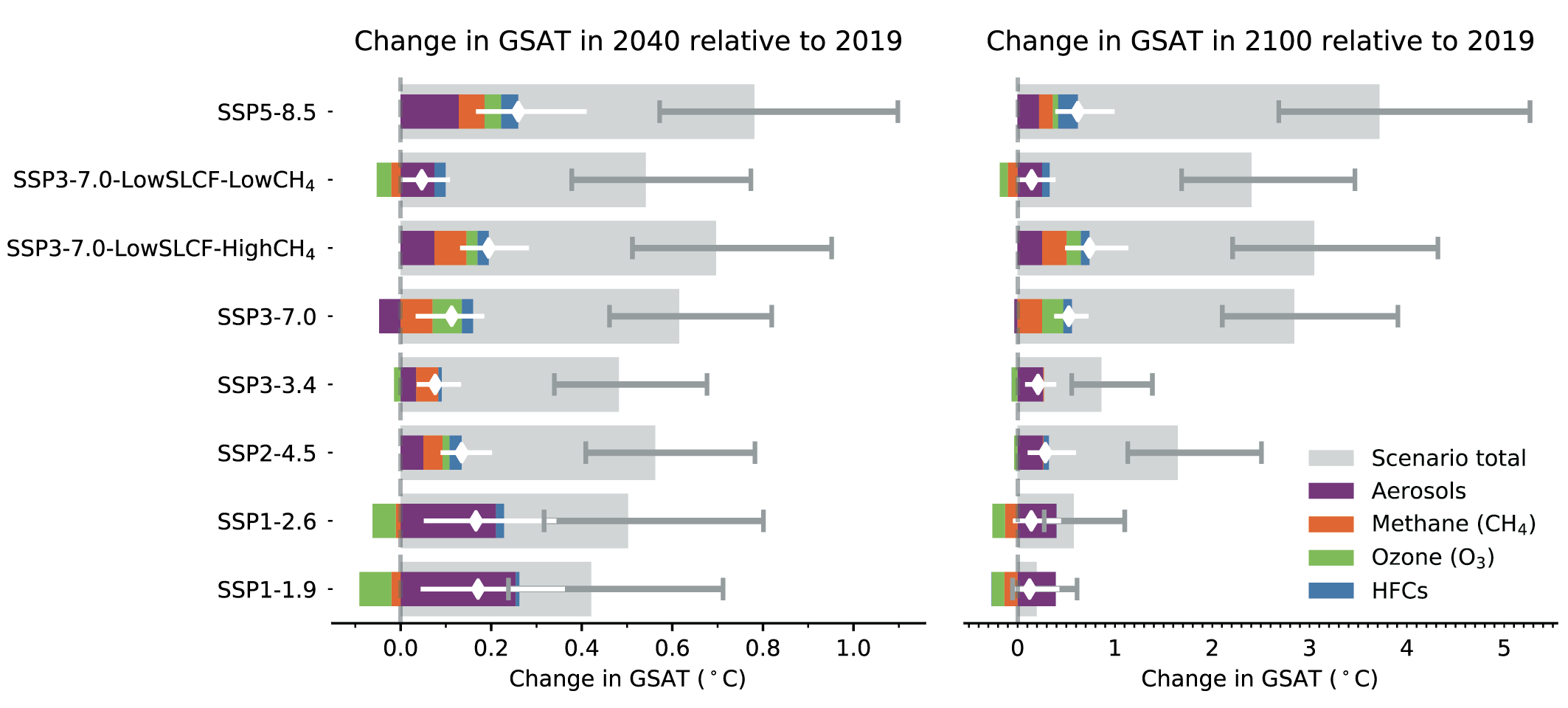Back chapter figures
Figure 6.24
Figure caption
Figure 6.24 | Effects of changes in short-lived climate forcers (SLCFs) and hydrofluorocarbons (HFCs) on global surface air temperature (GSAT) across the WGI core set of Shared Socio-economic Pathways (SSPs). Effects of net aerosols, methane, tropospheric ozone and hydrofluorocarbons (HFCs; with lifetimes <50years), are compared with those of total anthropogenic forcing for 2040 and 2100 relative to the year 2019. The GSAT changes are based on the assessed historic and future evolution of effective radiative forcing (ERF; Section 7.3.5). The temperature responses to the ERFs are calculated with an impulse response function with an equilibrium climate sensitivity of 3.0°C for a doubling of atmospheric CO2 (feedback parameter of –1.31 W m–2°C–1; Cross-Chapter Box 7.1). Uncertainties are 5–95% ranges. The scenario total (grey bar) includes all anthropogenic forcings (long- and short-lived climate forcers, and land-use changes) whereas the white diamonds and bars show the net effects of SLCFs and HFCs and their uncertainties. Further details on data sources and processing are available in the chapter data table (Table 6.SM.3).
